PART VI. Striking Errors:
Weak (Low Pressure) Strikes
Definition: A weak strike results from two proximate causes, inadequate ram pressure or insufficient die approximation (excessive minimum die clearance). Ram pressure is the tonnage applied to a planchet of normal thickness. Insufficient die approximation refers to the minimum approach the dies make to each other in the absence of a planchet. In many cases it is difficult or impossible to assign proximate cause. However, when a weak strike is accompanied by another error, or a weak strike progression can be assembled, the most common proximate cause appears to be insufficient die approximation. The dies simply don’t approach each other closely enough to leave a strong impression.
Ultimate cause is virtually impossible to determine. A weak strike could be due to a loose or cracked press frame, a loose or broken knuckle joint, a mistimed anvil or hammer die, a broken cam associated with either die, a jam-up in the guts of the press, a jam-up associated with an adjacent die pair, a broken circuit breaker, or simply dies that have fallen out of adjustment. A weakly struck coin could also be a test piece, otherwise known as a “die adjustment strike” or a “die trial”. Many weak strikes are labeled as such. But unless you were there the moment it was struck, there is no way to know. Therefore the terms “die trial”, “die adjustment strike”, “test piece”, and “set-up piece” should be abandoned.
Most, if not all weak strikes available in the marketplace appear to be the result of spontaneous equipment malfunction. The evidence for this is abundant and manifold.
- These errors are far too abundant to represent escapees from a test run. Test strikes are supposed to be set aside and consigned to the furnace for melting. You wouldn’t expect many coins to escape this fate.
- If these were test pieces, then you’d expect the greatest number of weak strikes to involve the denomination that is produced in greatest abundance – cents. However, weak strikes occur most frequently in dimes. That’s what you’d expect of weakness caused by spontaneous equipment malfunction. Dies that strike thin planchets have a very narrowly constrained minimum die clearance. If the clearance grows just a little bit, the strike will be weak. If the clearance shrinks even slightly, the dies are likely to clash. Thicker denominations have a much more generous clearance range. It is among these denominations that you’d expect to find fewer weak strikes, and this is indeed the case.
- Weak strikes can be found in association with a wide range of errors – double strikes, triple strikes, saddle strikes, misaligned die errors, clashed dies, indents, partial brockages, full brockages, struck-through errors, etc. Given how rare escaped test pieces are projected to be, multi-error test pieces should be as rare as unicorns.
- On multi-struck coins, a weak strike can immediately follow a strong strike and a strong strike can immediately follow a weak strike. Such rapid changes in die clearance (or ram pressure) would not be expected in a test run.
- Weak strike progressions can move in either direction – from weak to strong or from strong to weak. Such a progression can also show an erratic pattern of strengthening and weakening. That’s not what you’d expect of a test run.
- On saddle strikes, one off-center strike can be strong and the other weak. With respect to saddle strikes on previously-struck coins, the first strike can be weak while the two off-center strikes can be strong. The reverse situation has also been recorded. A weak first strike can then receive a saddle strike in which one of the off-center strikes is weak and the other is strong. None of these patterns is consistent with a test run scenario.
Weak strikes are sometimes confused with grease strikes – coins that are struck through a heavy layer of compacted die fill. It’s actually quite easy to tell the two errors apart.
- A weak strike will show a poorly developed or absent design rim. A grease strike will show a very well-developed design rim.
- A weak strike will retain some, most, or all of the planchet’s original proto-rim. The proto-rim is erased in a grease strike.
- A weak strike will retain the beveled rim/edge junction of the planchet. The bevel will be lost in a grease strike.
- The edge will be weakly struck and relatively narrow in a weak strike. The edge will be tall and vertical in a grease strike.
- Reeding will be weak or absent in a weak strike. Reeding will be very strong in a grease strike.
- In a weak strike, extent and pattern of weakness will be essentially the same on both faces. Uneven weakness is a hallmark of most grease strikes.
The photo below shows a weakly-struck 2007 Montana quarter. It was struck on a Schuler press, a model that doesn’t even require ram pressure and die clearance to be adjusted by means of a test run. The design rim is fairly well formed because state quarter dies have a relatively flat die face (very little die convexity).
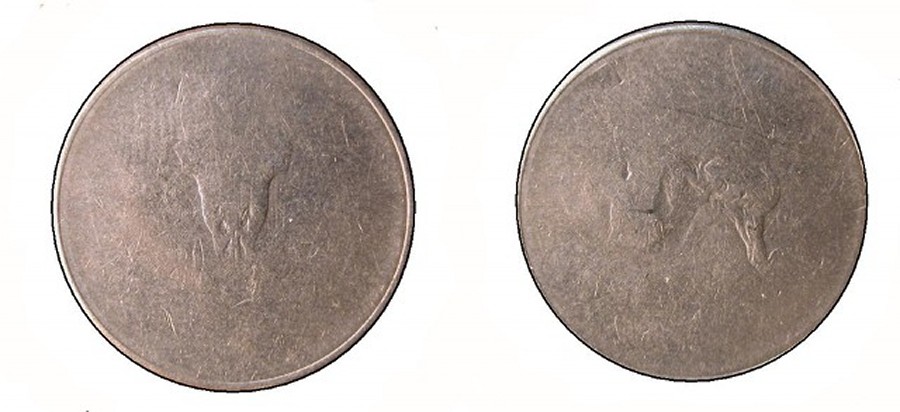
Shown below is a 1983-D 5-cent coin with a weak second strike delivered by a rotated (25 degrees) and misaligned (26%) hammer die.
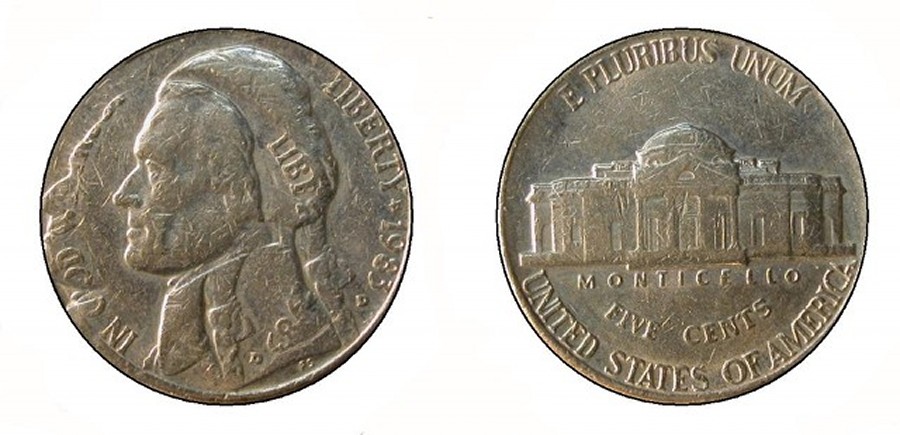
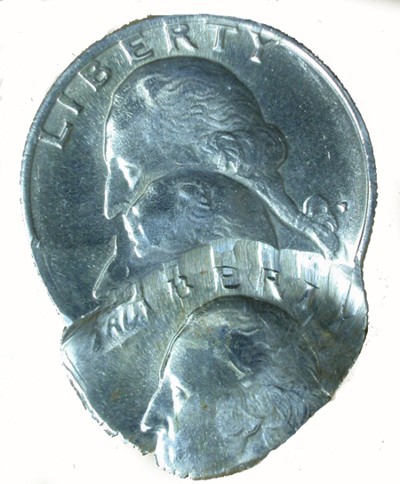
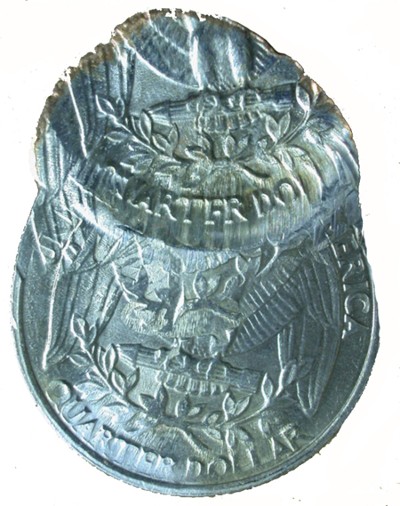
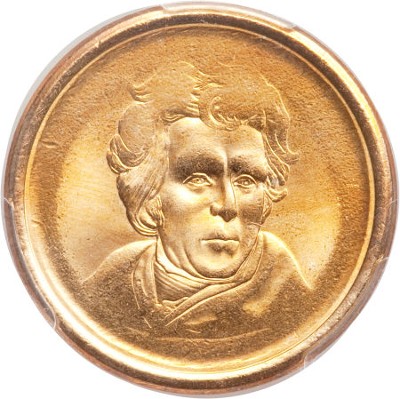
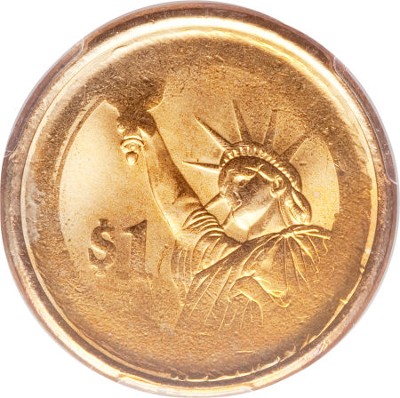
Images are courtesy of Heritage Auctions